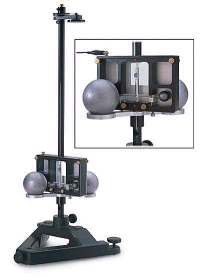My goal with APlusPhysics is to create a friendly, coherent and dynamic online resource with a consistent theme; an integrated toolset which can be easily customized to meet the needs of a diverse student and educator constituency while incorporating best known practices in physics education research. The site is designed for easy integration with physics modeling strategies, standards based grading (SBG), mastery learning, and “alternate pathway” programs which support students who, for various reasons, aren’t able to fit into the standard classroom educational model.
It’s a work in progress. I’m learning as I go, refining, expanding, deleting and rebuilding. And then doing it all over again. I’m thankful for the support of the physics community as they provide feedback, ideas, opportunities, and constructive criticism that allow for continual refinement and growth from a variety of perspectives, and whose thoughts and ideas are the foundation of this online conglomeration. I hope you find APlusPhysics a useful web resource, and this blog an insightful journal of a developing teacher’s successes, failures, challenges, struggles, and achievements.
Welcome one and all!
Dan Fullerton
WHO AM I?
I’m a high school physics teacher learning something new every day. I was an engineer in industry for more than 10 years, and an adjunct college professor for eight, yet after three years teaching standard introductory (Regents) as well as AP-B and AP-C physics classes, it is obvious to me that student learning styles are changing rapidly… the standard “by-the-book” pedagogy is no longer the optimal method for teaching all students. I need to find a way to differentiate across a wide range of abilities, interests, backgrounds and habits if I want to help each of my students grow to their maximum potential in the brief time I have with them.
I don’t have all (or many of) the answers — I don’t even have all the questions! What I do have is the energy and ability to learn, make changes, take risks, succeed, fail, and ultimately, grow. This blog details my journey.
WHY GO TO THE TROUBLE?
Writing is thinking. Writing forces you to organize your thoughts, to make mental connections — analyzing what’s worked, and what hasn’t. It forces you to think through your next steps, to reflect on why your experiments succeed and fail. It helps to recognize what you do and don’t know, providing a well-lighted path toward “filling in the gaps.”
No single text or resource completely matches the way you teach. Our class text is a wonderful resource for our students, and I was even lucky enough to serve on the committee which selected the book during my second year in the classroom. It’s accurate and thorough. It aligns nicely to our district outcomes and state standards. But it’s not designed specifically to the course I teach and the method in which I teach it.
Further, students are reluctant to learn and read independently from our text. This is troubling. The most important skill I can teach my students before they leave my classroom and go on to bigger and better things is the ability to teach themselves. Empowering them as learners requires technical reading, critical thinking, and discipline. I struggle with this throughout the entire year, and each year set a goal to extend my students’ independent learning skills through guided inquiry, discovery, and practice. Still, though, in many cases, even with our text, there are gaps.
BRIDGING THE GAPS
I have embarked on a project to create my own online physics resource, tailored specifically to course objectives, with as little extraneous information as possible, and consistent with the methods and organization I use in my classroom. I’m learning and changing every day, so this resource has to be dynamic. Problem solving practice with immediate and constructive feedback should be integrated into every unit. Most importantly, students should learn at their own pace. With a tremendous span of abilities, backgrounds, and learning styles, it’s obvious that one size and speed doesn’t fit all.
Key aspects of this resource, APlusPhysics, include online discussion forums promoting discourse about concepts, applications, and new developments in science; online homework help where students can assist each other (the best way to learn is to teach!); student and educator blogs for learning logs and self reflection; course content distilled down to the “need-to-know” facts with a variety of sample problems, designed specifically to meet course objectives; built-in quizzes to allow students to test their understanding; and resources for physics instructors focusing on student-centered active learning activities.
Many of these resources can be found, in whole or in part, elsewhere on the web. The Physics Classroom is a terrific online resource covering a wide variety of topics in physics; Cramster is a terrific resource for homework help and problem solving; Physics Forums is a terrific bulletin board system discussing physics developments and problems; Castle Learning offers students a tremendous repository for problem solving practice; and of course there are many others.
I’m not trying to rebuild or re-create any of these terrific resources… they all have tremendous potential for the students who take the time to learn and use them productively. However, the learning curve for this expanse of resources can seem insurmountable to the new physics student already exhibiting the classic “deer-in-headlights” shock I’m sure all physics teachers are familiar with. This project is an ongoing method of delivering, refining, and reflecting upon high school physics education.
 Scientists have been measuring the universal gravitational constant, G, for hundreds of years. But, how accurate are they in their measurements? Is G truly a constant? It’s a question physicists and astronomers continue to debate. Due to variations in experimentally obtained values for G, a number of postulates have been proposed which note that G may vary with time, and could be dependent on orientation, surrounding masses, even the curvature of space time!
Scientists have been measuring the universal gravitational constant, G, for hundreds of years. But, how accurate are they in their measurements? Is G truly a constant? It’s a question physicists and astronomers continue to debate. Due to variations in experimentally obtained values for G, a number of postulates have been proposed which note that G may vary with time, and could be dependent on orientation, surrounding masses, even the curvature of space time!
